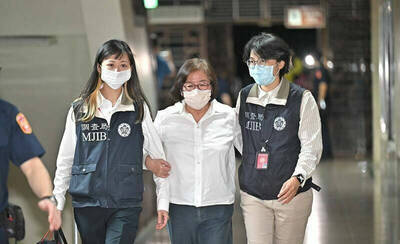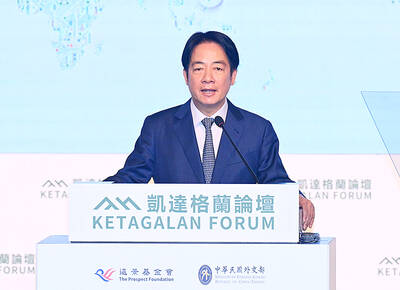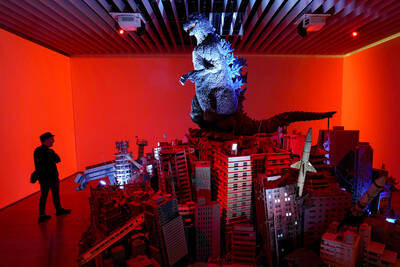NOW YOU CAN BURN YOUR OWN BLU-RAY HD DISCS,ON MAC OR PC, FOR LESS MONEY
The high-definition format wars are over, but if all that corporate combat got you excited for Blu-ray HD DVDs, you’ll be pleased to see the relatively low-cost BDR-2 by Amex, a US$389 portable
Blu-ray recorder for Macs and PCs.
The drive burns CDs, DVDs and
Blu-ray discs at standard speeds. It plays back all Blu-ray discs and even supports double-layer Blu-ray disc reading and writing, for storing up to 50 gigabytes on one disc.
The drive requires Mac or Windows software — it includes only a cable and drivers — and connects to any USB port. It weighs 340g and is 12.7cm wide by 12.7cm long. It comes in black or white.
Amex is a small company that sells home media devices including larger Blu-ray players for the Asian market. Most of its products, including the BDR-2, are expected to be available online next month. Blu-ray may not have a terribly long future (because of the increasing availability of HD downloads), so buying a BDR-2 for less than other Blu-ray burners cost may be a smart move.
LAPTOP LITE WITH WINDOWS XP (AND SOON LINUX)
Hewlett-Packard is getting small. A gaggle of miniaturized notebooks, announced last week and collectively called the Mini 1000, will be available in various configurations that begin at US$379. The group is described as less capable than full-fledged laptops, but ideal for using the Internet on the go.
Most models operate with Windows XP, including a US$399 version available this week, fitted out with an 8.9-inch screen and an 8-gigabyte solid-state drive. For US$50 more, buyers can get a 10.2-inch screen without increasing the case size (26cm by 16.8cm by 2.5cm). Other variations include larger-capacity solid-state and revolving hard drives.
A Linux version with mobile applications will be US$379 when it ships in January. All have Wi-Fi, and Bluetooth is an option. A cellular-data version is due out next month. Weighing in at 1kg to 1.08kg, depending on screen size, these devices can almost go from shoulder bag to purse — or even a generously sized pocket.
TURNING NEGATIVES AND OLD SLIDES INTO DIGITAL MEMORIES
Preserving memories made in the digital age is easy and inexpensive. Unfortunately, the same cannot be said about that pile of slides and negatives from your 1984 Halloween party.
The iConvert Slide and Negative Scanner from Brookstone is a welcome alternative to paying a professional to do such work for you. Plug the 35mm scanner into your computer’s USB port, hit scan and the iConvert will use its 5-megapixel sensor and 3,600-dots-per-inch enhancement to save the images to your desktop.
The digital converter works with both Windows XP and Vista and comes with its own photo-editing software (though serious photo enthusiasts might be better off using Adobe PhotoShop or a similar program). Patience is definitely a virtue when using the scanner because the holder accommodates only three slides at a time. You can buy additional slide trays from Brookstone’s Web site.
The iConvert Slide and Negative Scanner is US$130. The picture of you as a member of Prince and the Revolution is, of course, priceless.
DVD BURNER FOR VIDEOS AND SLIDE SHOWS
Samsung expanded its TruDirect line of DVD burners last month with a low-profile external drive. The Slim External TruDirect DVD recorder (US$109), which started shipping last week, works only with the Windows operating system. No A/C adapter is needed to power the drive. Instead, it connects to a PC with a USB connection (but it requires the use of two USB ports).
Samsung said that transfer speeds can be up to 10.8 megabytes a second, and that one hour of video can be burned in 30 minutes. With the bundled editing software from Nero, you can create videos, slide shows or audio slide shows, burn DVDs and CDs, or back up data. But the software is limited in its audio and picture-editing capabilities. Samsung said the drive was compatible with any editing and burning software on the market today, and once your new DVD was created, it could be viewed on any computer or DVD player. The DVD burner also prints discs.
The DVD burner supports only discs with LightScribe technology, which etches images directly onto the disc. The label-making software is preloaded on the drive, which prints only in gray scale.
FINALLY, A SPEAKERPHONE MADE JUST FOR MACS
It’s a frustration that vexes many Apple users. Some products just aren’t made for Macs. Until now, Ipevo’s TR10 speakerphone was on that list.
The TR10, previously made for Skype users only, has been introduced for iChat. Marketed as the first speakerphone made exclusively for iChat use, the TR10 also acts as a personal handset and recorder, depending on how you position it. When upright, the TR10 works as a personal speakerphone. Rest it flat next to your desktop to record podcasts using Apple’s GarageBand.
The TR10 can also be toggled to handset mode for more private conversations. The speakerphone comes with echo cancellation, a 1.5m voice reception range, one-touch iChat answering and hanging-up mode and a conference option that can handle up to four calls simultaneously.
You can also use the TR10 to listen to music on iTunes. Sorry, PC users, the US$80 TR10 for iChat is Mac-compatible only.
A LIGHTWEIGHT SUCCESSOR PACKS A PORTABLE PUNCH
With all eyes on Apple last month, some other noteworthy product introductions did not get their fair share of fanfare. Take the Toshiba Portege R600 laptop.
In case you missed it, the R600 is 1.96cm thick and a lightweight 1kg, and still includes a DVD-SuperMulti drive. Unlike owners of the MacBook Air, R600 owners don’t have to give up their optical drive for portability’s sake.
The R600, successor to the R500, can run 7 1/2 hours on its battery, and features a 12.1-inch diagonal widescreen display and a centered touchpad. At US$2,100, the laptop offers a 160-gigabyte hard drive; for US$3,000, you get a 128-gigabyte solid state drive. The R600 also comes with technology that continuously checks battery life and CPU temperatures, and sees that the hard drive is functioning properly, which should help the laptop last longer.
Also of note are its LED-backlighted display, built-in webcam and microphone, 3 gigabytes of memory and Intel Core 2 Duo Processor. Perhaps you can compare apples to oranges after all.

Following the shock complete failure of all the recall votes against Chinese Nationalist Party (KMT) lawmakers on July 26, pan-blue supporters and the Chinese Communist Party (CCP) were giddy with victory. A notable exception was KMT Chairman Eric Chu (朱立倫), who knew better. At a press conference on July 29, he bowed deeply in gratitude to the voters and said the recalls were “not about which party won or lost, but were a great victory for the Taiwanese voters.” The entire recall process was a disaster for both the KMT and the Democratic Progressive Party (DPP). The only bright spot for

As last month dawned, the Democratic Progressive Party (DPP) was in a good position. The recall campaigns had strong momentum, polling showed many Chinese Nationalist Party (KMT) lawmakers at risk of recall and even the KMT was bracing for losing seats while facing a tsunami of voter fraud investigations. Polling pointed to some of the recalls being a lock for victory. Though in most districts the majority was against recalling their lawmaker, among voters “definitely” planning to vote, there were double-digit margins in favor of recall in at least five districts, with three districts near or above 20 percent in

From Godzilla’s fiery atomic breath to post-apocalyptic anime and harrowing depictions of radiation sickness, the influence of the nuclear bombings of Hiroshima and Nagasaki runs deep in Japanese popular culture. In the 80 years since the World War II attacks, stories of destruction and mutation have been fused with fears around natural disasters and, more recently, the Fukushima crisis. Classic manga and anime series Astro Boy is called “Mighty Atom” in Japanese, while city-leveling explosions loom large in other titles such as Akira, Neon Genesis Evangelion and Attack on Titan. “Living through tremendous pain” and overcoming trauma is a recurrent theme in Japan’s

The great number of islands that make up the Penghu archipelago make it a fascinating place to come back and explore again and again. On your next trip to Penghu, why not get off the beaten path and explore a lesser-traveled outlying island? Jibei Island (吉貝嶼) in Baisha Township (白沙鄉) is a popular destination for its long white sand beach and water activities. However, three other permanently inhabited islands in the township put a unique spin on the traditional Penghu charm, making them great destinations for the curious tourist: Yuanbeiyu (員貝嶼), Niaoyu (鳥嶼) and Dacangyu (大倉嶼). YUANBEIYU Citou Wharf (岐頭碼頭) connects the mainland